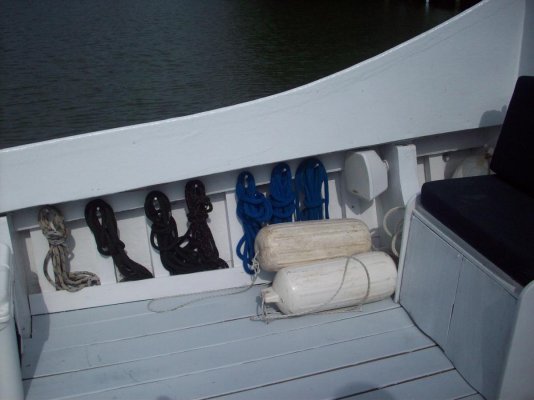rsn48
Guru
- Joined
- Feb 18, 2019
- Messages
- 2,019
- Location
- Canada
- Vessel Name
- Capricorn
- Vessel Make
- Mariner 30 - Sedan Cruiser 1969
This question for me is purely hypothetical though others might benefit from the discussion. My boat is 50 years old and has a fiberglass over wood hull original build. The hull is in amazing shape. Everything was gutted below deck, all tanks, engine, everything taken out, the inside of the hull was washed, every area inspected for wood damage, and then the bottom third repainted with an epoxy paint to preserve the wood later on down the line from water damage. A few small soft spots around through the hulls were repaired.
While this refit was underway I came across a 1972 Grand Bank that was in amazing shape and I almost purchased it. I do know that all wood boats are a labour of love scenario. The work is endless. But the hull on initial inspection, not a survey, looked in decent shape, based on an interior inspection. Now for the sake of the argument, lets assume the hull is in amazing shape.
Rather than deal with the work involved in the long term with an all wooden hull, why can't the exterior of the hull be finished professionally.
The one disadvantage to a refinished hull would be added weight. But given the amount of work concerning wooden hulls and based on my experience with my 50 year old hull, wouldn't the owner be better off glassing the hull? Since almost no one does this, there must be something I am missing.
So what's the scoop, I guess a wooden scoop covered with fiberglass.
I have linked this before, but thought I'd throw it in as to why I have thought about fiberglassing the hull as the boat owner in the video does continual repairs on his hull:
While this refit was underway I came across a 1972 Grand Bank that was in amazing shape and I almost purchased it. I do know that all wood boats are a labour of love scenario. The work is endless. But the hull on initial inspection, not a survey, looked in decent shape, based on an interior inspection. Now for the sake of the argument, lets assume the hull is in amazing shape.
Rather than deal with the work involved in the long term with an all wooden hull, why can't the exterior of the hull be finished professionally.
The one disadvantage to a refinished hull would be added weight. But given the amount of work concerning wooden hulls and based on my experience with my 50 year old hull, wouldn't the owner be better off glassing the hull? Since almost no one does this, there must be something I am missing.
So what's the scoop, I guess a wooden scoop covered with fiberglass.
I have linked this before, but thought I'd throw it in as to why I have thought about fiberglassing the hull as the boat owner in the video does continual repairs on his hull:
Last edited:




